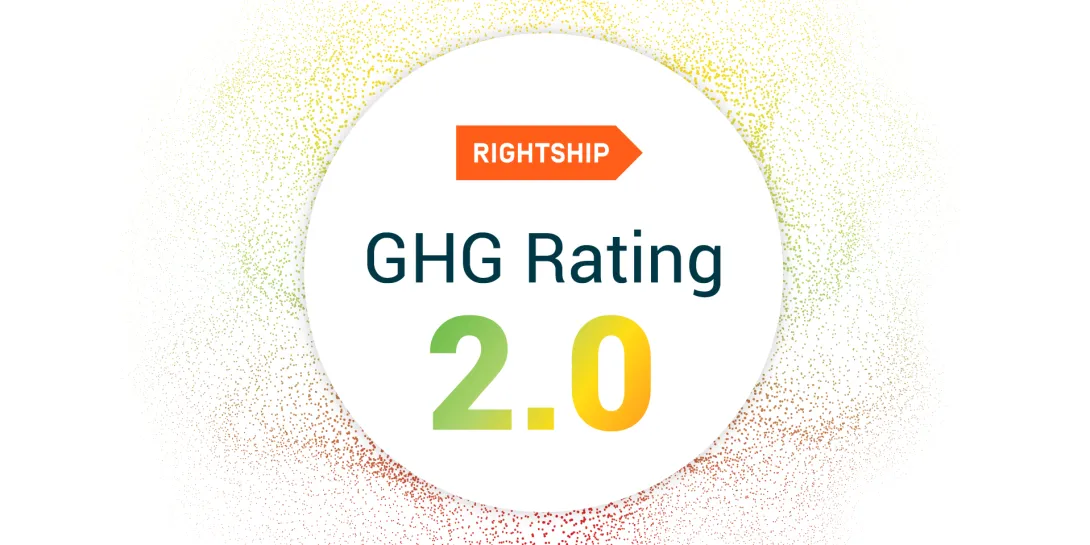-
The product assesses vessels’ greenhouse gas (GHG) emissions output based on design, and is used by ship owners & managers, charterers, ports, terminals and financial organisations to assess the sustainability and inform decarbonisation strategies
-
The updated GHG 2.0 Rating features a reworked methodology in line with the latest IMO EEXI regulatory developments
RightShip launches updated GHG 2.0 Rating with revamped methodology to drive maritime decarbonisation

13th September, 2023: RightShip, the leading provider of maritime data and transparency, announces the launch of its enhanced GHG 2.0 Rating – the latest version of its industry leading maritime decarbonisation product. The new version features an updated and improved methodology built in line with IMO regulatory developments such as EEXI and has been subject to rigorous review and validation from industry with the aim to support the drive for decarbonisation as efficiently and effectively as possible.
IMO regulations require that ship owners cut their carbon emissions such that international shipping reaches net zero by, or around, 2050. One of the key approaches to reaching this target is by facilitating and incentivising more efficient vessel design. The existing GHG Rating methodology draws on two main sources to do so: the IMO’s Energy Efficiency Design Index (EEDI), which measures the theoretical CO2 emissions per tonne/nautical mile travelled of ships built since 2013, and RightShip’s complementary Existing Vessel Design Index (EVDI) which measures the same output for pre-EEDI vessels and post-2013 built retrofitted vessels.
The IMO’s Energy Efficiency Existing Ship Index (EEXI) is based on the EEDI and calculates the energy efficiency of vessels in gCO2/tonne.nm, based on ship design. RightShip’s new GHG 2.0 Rating product is the only environmental rating that encompasses all three indices.
Vessels are categorised into peer groups based on vessel type and capacity, and then assigned a rating of A-E based on their emissions performance relative to their peers. As such, the GHG 2.0 Rating is dynamic and keeps in-step with the sector as new vessels launch, old ones are retired, existing fleet upgraded with energy saving measures, and emissions improve.
Christopher Saunders, Chief Product Officer at RightShip said: “The GHG Rating is regarded by many as the gold-standard for vessel environmental ratings, and we have updated the methodology to maintain that high standard. As regulations and technologies evolve, so must we to ensure we are doing everything we can to enable and encourage more sustainable vessel design and deployment.”
The launch of the updated rating comes after the official launch of EEXI requirements as of 1st January 2023. However, EEXI approval is typically completed at the first annual, intermediate or renewal IAPP survey due for a vessel after this date. As such, there has been a staggered availability of data required to populate the new rating.
The GHG 2.0 Rating differs in its use of operational measures such as engine power limitation (EPL). As these measures can be overridden and are not inherent to ship design, RightShip employs the Admiralty principle to remove the effect of such measures on the rating. This ensures vessels are compared fairly based on design potential, whilst operational measures will be included in the IMO’s Carbon Intensity Indicator (CII) regulation, which will also be available on the RightShip platform in future.
Jon Lane, Senior Sustainability Manager, said: “We understand why some have called for the rating methodology to simply mirror EEXI. However, we have thought long and carefully about this, and do not consider this to produce fair, ‘apples to apples’ comparisons. As such, we have put the Admiralty principle at the core of the product to remove distortions. Of course, we encourage any measure that reduces emissions, including EPL, but we consider this to be an operational measure rather than one of design.”
With the new EEXI data incorporated into the GHG rating, vessel ratings will necessarily be recalibrated. Some vessels may see their rating improve, while others will inevitably have their rating lowered. RightShip understands this is a cause for concern for those affected and is committed to supporting the sector through open dialogue and guidance.
Man Mohan, Product Manager for the GHG 2.0 Rating added: “Our new methodology has been independently verified and we are confident this produces the most transparent and objective way to compare vessels and, therefore, to incentivise improvements to vessel design. Our commitment at RightShip is first and foremost to a zero harm maritime sector, and this is a vital step in reaching that goal.”
For the latest GHG Ratings, please see the change report here.